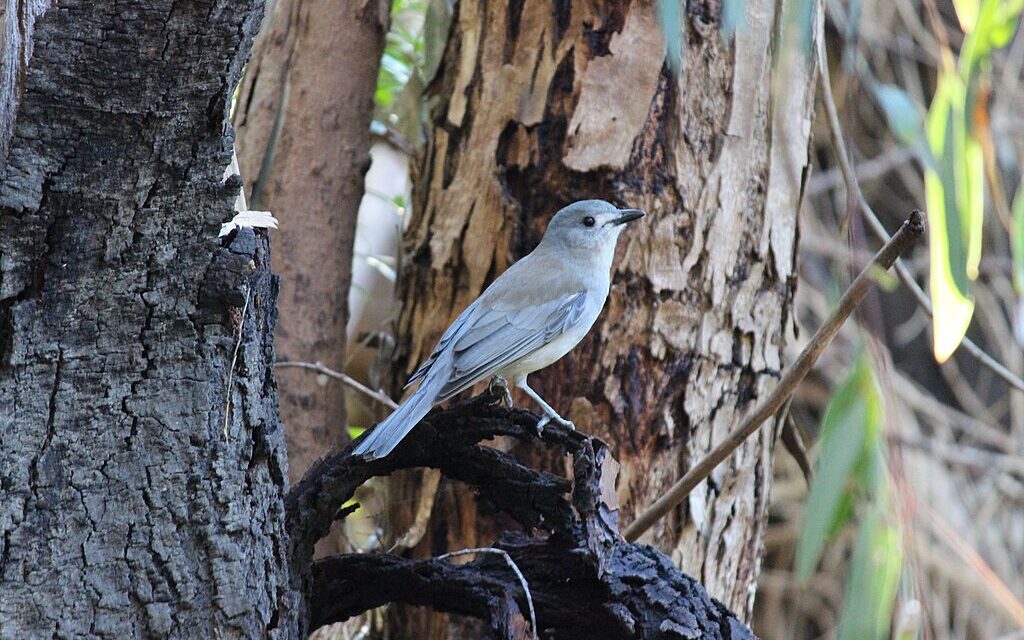Tanya Loos
One of my favourite sounds of winter is the two note call of the Grey Shrike-thrush.
During Spring, Summer and even Autumn, Grey Shike-thrushes fill our bushland and woodlands with beautiful song. Their song is so gorgeous that their species name is Collluricincla harmonica, and one of their old names is the Harmonious Thrush.
As the common name suggests, they are mostly grey in colour, as well as a lovely chestnut ‘saddle’ on their back. At first glance, males, females and juveniles all look the same, but there are a few differences. The most obvious is that males have a blackcoloured bill, females and juveniles have a bone-coloured bill, and juveniles have a cute rufous (or red) coloured eyebrow and streaks on their breast feathers.
Are they shrikes? Or are they thrushes? Neither! We have no shrikes in Australia, and our only thrush is the Bassian Thrush, the gorgeous native thrush that is related to blackbirds. We have such a rich endemic Australian avifauna, whole groups of birds that are found nowhere else in the world. And somewhat unimaginatively many of these birds were named by colonists as combined names of European birds – eg shrike-thrush, cuckoo-shrike, shrike-tit, fairy-wren, scrubwren, magpie-lark.

Male grey shrike-thrush. (Photo: J.J. Harrison)
Grey Shrike-thrushes are in the family Pachycephalidae, the whistlers and allies, a nice big family of species that includes the Golden and Rufous Whistler, who also sing beautifully! For more on this group see here.
But back to the call…. Grey Shrike-thrushes are found nearly Australia-wide, with various subspecies and regional dialects in their song. Here is a recording of a winter call from near Kinglake https://xeno-canto.org/804364 which sounds very much like our local shrike-thrushes. It is quite different to the rich and varied song – here is a recording of a shrike-thrush song from the Clunes area https://xeno-canto.org/859793
The difference between a song and a call is that a song is often long and complex, with variation, and often used for territorial defence and bonding between mates as they simultaneously perform long and complex duets. Calls, on the other hand, are simple and often simply ‘contact calls’ allowing pairs to stay in touch as they forage through the forest.
They really are a lovely garden bird to have around – although they do eat other baby birds just as much as the much maligned Pied Currawongs and Little Ravens!
Ask Tanya:
Hi Tanya,
Just wondering if you have any ideas about ‘discouraging’ swamp rats. We live on the south coast of SA (Goolwa) and have them busily tunnelling around the garden ( not the veggie garden as it is in wicking beds) but the other garden plants are being undermined and our small lawn is slightly dangerous now as it collapses underfoot. I do like having them but it’s swamp rats winning at the moment!!
Best wishes, Meredyth.
Hi Meredyth,
Tanya Loos is a local naturalist, author and environmental consultant who loves to work in the environmental not-for-profit sector. She is the author of “Daylesford Nature Diary” available from her website or from Paradise Books in Vincent Street, Daylesford.
Have you got any nature questions for Tanya? Send them in!













